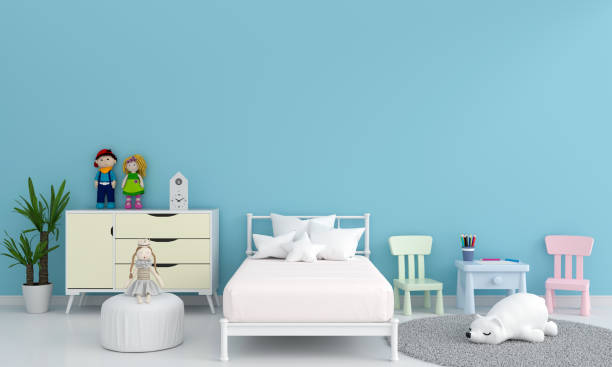Design Inspiration: Creating a Dream Bedroom for Children
Design Inspiration: Creating a Dream Bedroom for Children, Designing a child's bedroom is an exciting opportunity to blend functionality with creativity. The ideal bedroom should foster imagination, provide a sense of comfort, and grow with your child. Here are some inspired ideas to help you create a magical and practical space for your little ones.
1. Theme-Based Design
Choosing a theme can make the design process fun and cohesive. Consider your child’s interests and hobbies:- Adventure: Use a nautical or jungle theme with maps, ships, or animal motifs. Incorporate elements like a boat-shaped bed or a canopy that resembles a jungle tree.
- Fantasy: Think of fairytales or magical kingdoms. Include elements like a castle bed, twinkling fairy lights, or a reading nook resembling a dragon’s lair.
- Space: Encourage their curiosity about the universe with a space-themed room. Use dark walls with glow-in-the-dark stars, planetary decals, and spaceship beds.
2. Color Schemes
Color plays a crucial role in setting the mood of the room. Opt for hues that reflect your child’s personality while providing a calming environment.- Soft Pastels: Ideal for creating a serene and soothing atmosphere. Shades like mint green, baby blue, and soft pink can be complemented with white furniture.
- Bold and Bright: Energizing colors such as yellow, red, and blue can stimulate creativity and play. Use these in accents and accessories to avoid overwhelming the space.
- Neutral Base with Pops of Color: A neutral backdrop with vibrant accessories allows the room to evolve easily as your child grows.
3. Functional Furniture
Furniture should be functional, safe, and adaptable. Look for pieces that serve multiple purposes and can adapt to your child's changing needs.- Convertible Cribs and Beds: These can transform from a crib to a toddler bed to a twin bed, growing with your child and providing long-term use.
- Storage Solutions: Incorporate plenty of storage to keep the room tidy. Bins, shelves, and under-bed storage can help manage toys, books, and clothes.
- Study Area: A dedicated space for homework with a comfortable chair, adjustable desk, and good lighting will promote good study habits.
4. Creative Play Areas
Incorporate spaces that encourage imaginative play and creativity.- Reading Nook: A cozy corner with a small bookshelf, comfortable cushions, and soft lighting can foster a love for reading.
- Art Station: Include a small table with art supplies where your child can draw, paint, and craft.
- Play Tents and Teepees: These add a whimsical element to the room, providing a special hideaway for your child.
5. Personal Touches
Adding personal touches can make the room feel special and unique to your child.- Customized Wall Art: Use decals, murals, or framed artwork that reflects your child’s interests and personality.
- Name Decorations: Incorporate your child's name in the decor with letter wall hangings or custom-made signs.
- Family Photos and Mementos: Display family photos and cherished keepsakes to make the room feel more personal and comforting.
6. Safety First
Ensure that the room is safe for your child by considering the following:- Non-Toxic Paints: Use paints and finishes that are free from harmful chemicals.
- Secure Furniture: Anchor heavy furniture like bookshelves and dressers to the wall to prevent tipping.
- Soft Edges: Choose furniture with rounded edges to avoid injuries.
7. Growth-Friendly Design
Design the room with flexibility in mind to accommodate your child’s growth.- Adjustable Furniture: Opt for furniture that can be adjusted as your child grows, such as desks and chairs with adjustable heights.
- Timeless Decor: Choose decor that can easily transition from a child’s to a teenager’s room. Neutral walls and classic furniture can be updated with new accessories.
Designing a child’s bedroom is about creating a space that is both functional and fun. By incorporating themes, thoughtful color schemes, adaptable furniture, and personal touches, you can craft a room that sparks joy and creativity while providing comfort and safety. Remember, the best room is one that reflects your child’s unique personality and adapts to their evolving needs.



Post a Comment for "Design Inspiration: Creating a Dream Bedroom for Children"